Nearly three decades into the professional era of men’s rugby, it is now a well-established fact that the churn of playing talent up through the ranks in New Zealand and out into the wider world is constant.
At the end of the four-year cycle that culminated in the 2019 Rugby World Cup in Japan, it was therefore unsurprising to see a number of established Super Rugby players — international stars and less heralded veterans alike — go overseas.
The departure of legendary All Blacks number 8 Kieran Read — who retired from all rugby at the conclusion of his second and final Top League campaign a couple of weeks ago — felt particularly symbolic.
New head coach Ian Foster was immediately faced with the prospect of finding a replacement for a man who played 127 tests, and who Foster’s predecessor Steve Hansen recently described to Stuff as “the complete rugby player”.
However, Read’s was not the only experience lost at his position. In total, five players who made a total of 109 starts at number 8 between 2016 and 2019 headed offshore after the most recent World Cup.
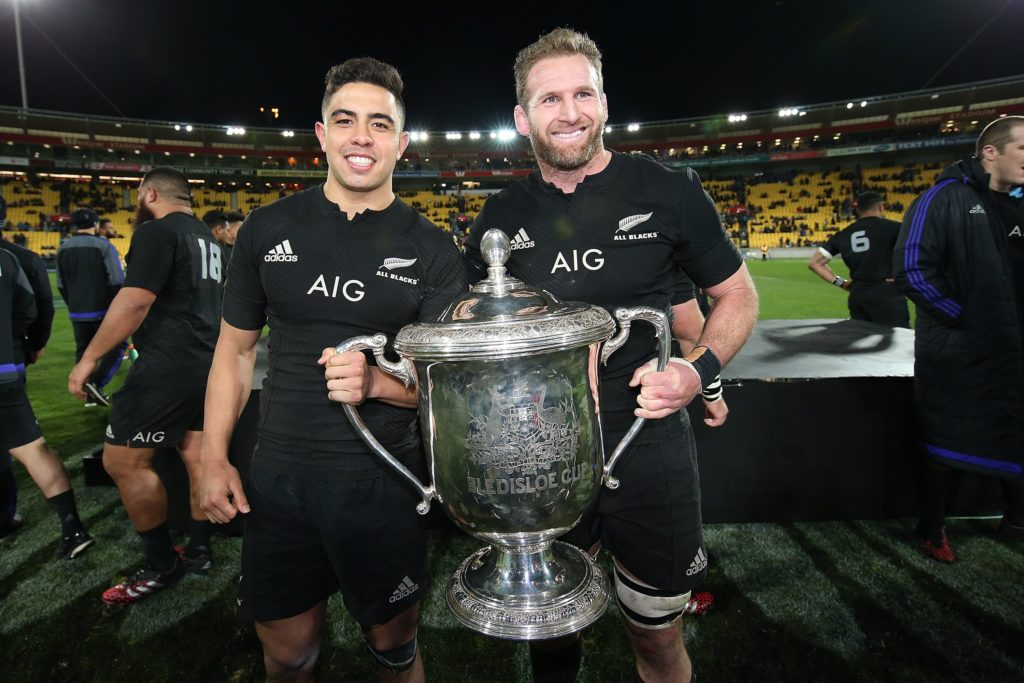
All told, at the beginning of 2020 the five Kiwi Super Rugby franchises were without 16 players who between them had started 218 of their 338 games at number 8 over the preceding four-year period.
Before considering who would take over from Read at test level, there was therefore a more basic question that needed to be addressed first. Who would step up and fill the gaps that had appeared at the position in Super Rugby?
Now, almost 18 months into this new World Cup cycle, we have a clear answer.
Each of the five Super franchises has identified a player with the potential to start at the base of their scrum for years to come.
At the beginning of last season, the Blues pushed Akira Ioane — who started 40 times at 8 between 2016 and 2019 — to the blindside to make room for the prodigiously talented Hoskins Sotutu.
Sotutu — with 19 starts at 8 and over 1,400 minutes on the field since the beginning of 2020 — has played comfortably the most Super Rugby of any of the five in this cycle so far.
The Chiefs have settled former New Zealand U20 captain Luke Jacobson at number 8 in 2021, after experimenting with him across the back row in previous seasons.
Converted lock Cullen Grace became an instant favourite of Crusaders head coach Scott Robertson in 2020 — his first season in Christchurch — and has started all but two of their games in the 8 shirt in his second year of Super Rugby.
Before being diagnosed with a stress fracture in his leg after the Highlanders’ penultimate game of Super Rugby Aotearoa 2021, Marino Mikaele-Tu’u had started 16 of the franchise’s last 20 games at the position.
And, after introducing him off the bench in his rookie year in 2020, Jason Holland has started Devan Flanders at number 8 for the Hurricanes six times in 2021.
Each player is still incredibly young — Jacobson and Mikaele-Tu’u are 24, Sotutu turns 23 in July and Grace and Flanders are both just 21 — and has significant room for growth. Nonetheless, they are already valuable contributors for their respective franchises.
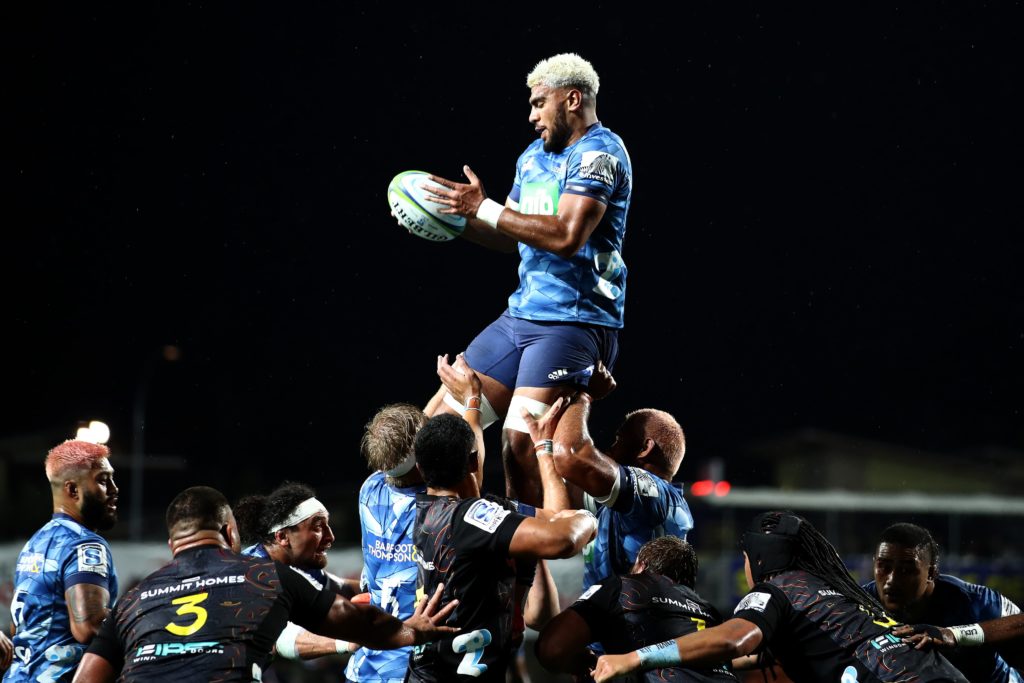
While there are facets of the game (the attacking breakdown, for example) for which little or no public data exists, analysis of the statistics which are available can provide a good overview of where they currently add value to their teams — and how they stack up relative to one another at this early stage of their respective careers.
Sotutu — with 19 starts at 8 and over 1,400 minutes on the field since the beginning of 2020 — has played comfortably the most Super Rugby of any of the five in this cycle so far.
Put simply, his game is defined by the extent of his involvement in all aspects of the Blues’ attacking play.
Over this period, he has averaged 20.9 attacking touches (combined kicks, carries, passes and offloads) per 80 minutes — 5.8 more touches than the second-ranked player by this metric among this group of players, Mikaele-Tu’u.
Given the variety and frequency of his activity when his team are in possession, it’s unsurprising that none of the other four number 8s have been involved in as many tries as Sotutu has over the last two seasons of Super Rugby.
These touches come all over the field. When the Blues have possession in phase play, Sotutu can be found linking with others in a 15m channel or carrying hard off 9. When they get nearer to the try line, he edges even closer to the ruck, using his superlative ball-handling skills to pick and go speedily around the fringes of rucks or flip deft short passes to teammates.
He’s also one of their primary weapons from set-piece platforms. He excels carrying off the back of the scrum, and his wide passing is dangerous enough that head coach Leon MacDonald often uses him as a midfield distributor from lineouts outside the red zone.
Given the variety and frequency of his activity when his team are in possession, it’s unsurprising that none of the other four number 8s have been involved in as many tries as Sotutu has over the last two seasons of Super Rugby.
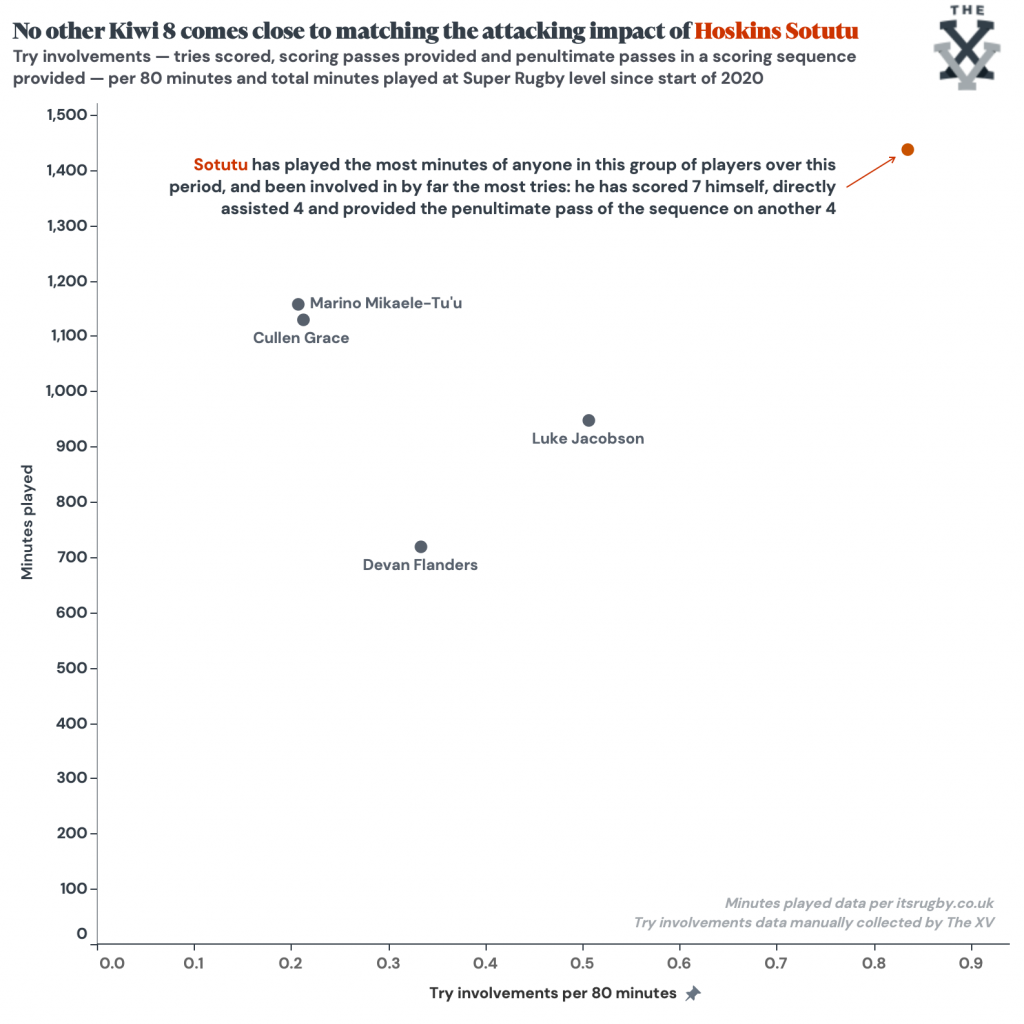
Jacobson — who, with a total of 1,220 minutes played for the Chiefs across the 2018 and 2019 seasons, was the most experienced of these players coming into the current cycle — is the second-ranked player by this metric.
(Last weekend, he showed excellent control and awareness to score twice off the back of the Chiefs’ dominant scrum against the Brumbies in Round 2 of Super Rugby Trans-Tasman.)
However, where he has set himself apart from others in his position is at the defensive breakdown — as you might expect from someone who has played a significant amount of rugby across the back row.
Jacobson’s strength over the ball is unmatched among this group of players, winning 1.2 turnovers per 80 minutes — 0.5 more than his nearest competitor.
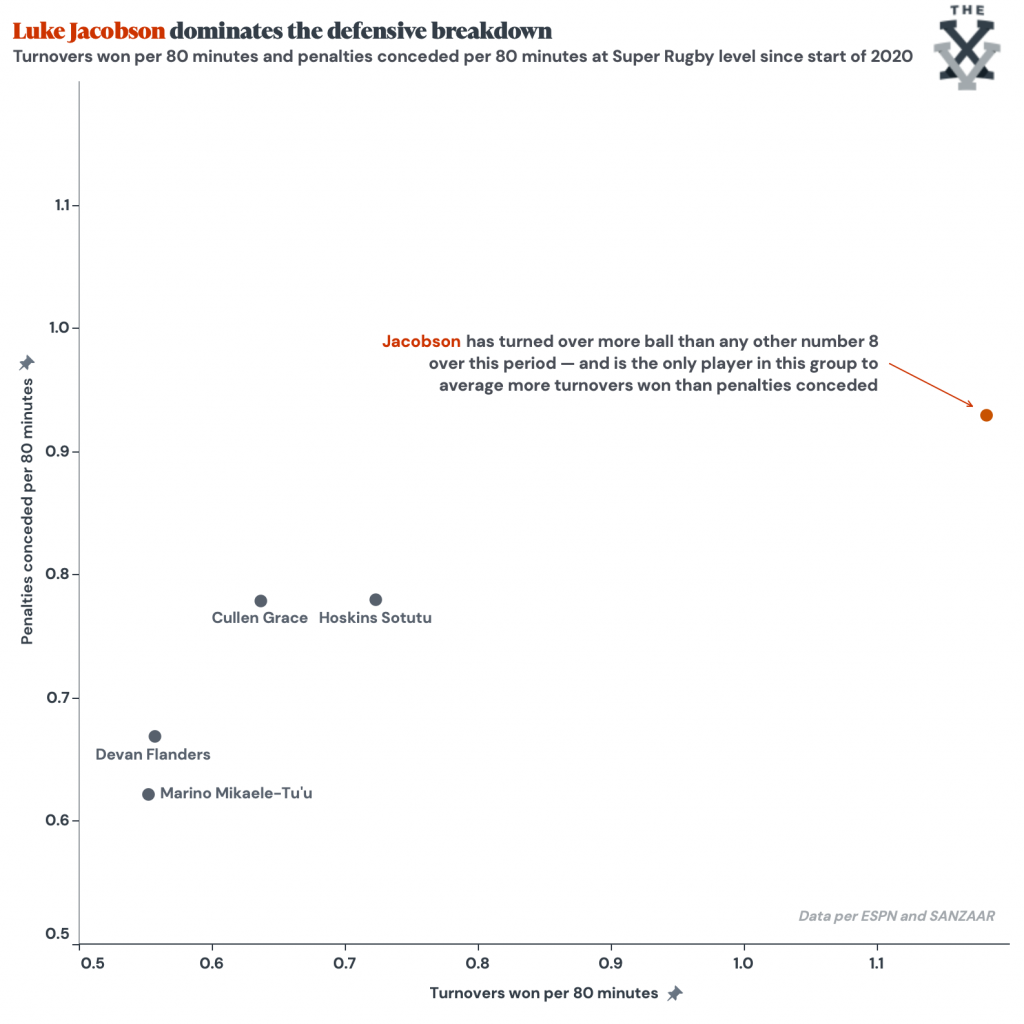
In an interview with NZ Rugby World last year, the Chief expressed a desire to play more frequently at the base of the scrum, noting that he was unsure whether he possessed “that lineout height for a 6”.
But, even in his new role at 8, the Chiefs have persisted with using him as a jumping option: Jacobson won ball on the team’s own throw 1.9 times per 80 minutes last year, and that figure has remained fairly constant (1.8) in 2021.
Each of these five number 8s are lineout forwards in their own right, but it’s in this part of the game that former second row Grace really comes to the fore — both in attack and defence.

When the All Blacks’ squad for 2020 was announced last September, assistant coach John Plumtree noted the versatility that Grace brought to the group, acknowledging that he was an option to cover lock, blindside and number 8.
And while this flexibility may make him well suited to a bench spot in the long term — similar to the role played by Victor Vito in the 19 shirt in the knockout stages of the 2015 World Cup — he will need to improve his contribution to his team’s attack if he is to put forward a legitimate claim to start at 8 at international level.
Grace has had the fewest attacking touches per 80 minutes since the start of 2020 (11.5) of any of these five players, and often fills a basic role carrying in a pod in the middle of the field.
The game plan that we ran with gave me opportunities out wide and gave me the ball to play against some of the smaller guys on the field.
Marino Mikaele-Tu’u on his breakout 2020 season with the Highlanders
With that need for growth in mind, his recent performance with ball in hand against the Reds in Brisbane — carrying 9 times for 72 metres and completing 7 passes in 60 minutes — was promising.
One player who has excelled in that ‘edge forward’ role when he’s been on the field is the Highlanders’ Mikaele-Tu’u.
At the conclusion of the 2020 Super Rugby season, he told RugbyPass: “the game plan that we ran with gave me opportunities out wide and gave me the ball to play against some of the smaller guys on the field.”
Lining up opposite those less imposing defenders, Mikaele-Tu’u — listed at 113kg by his franchise — has been able to exploit mismatches with his neat footwork and an eye for a gap.
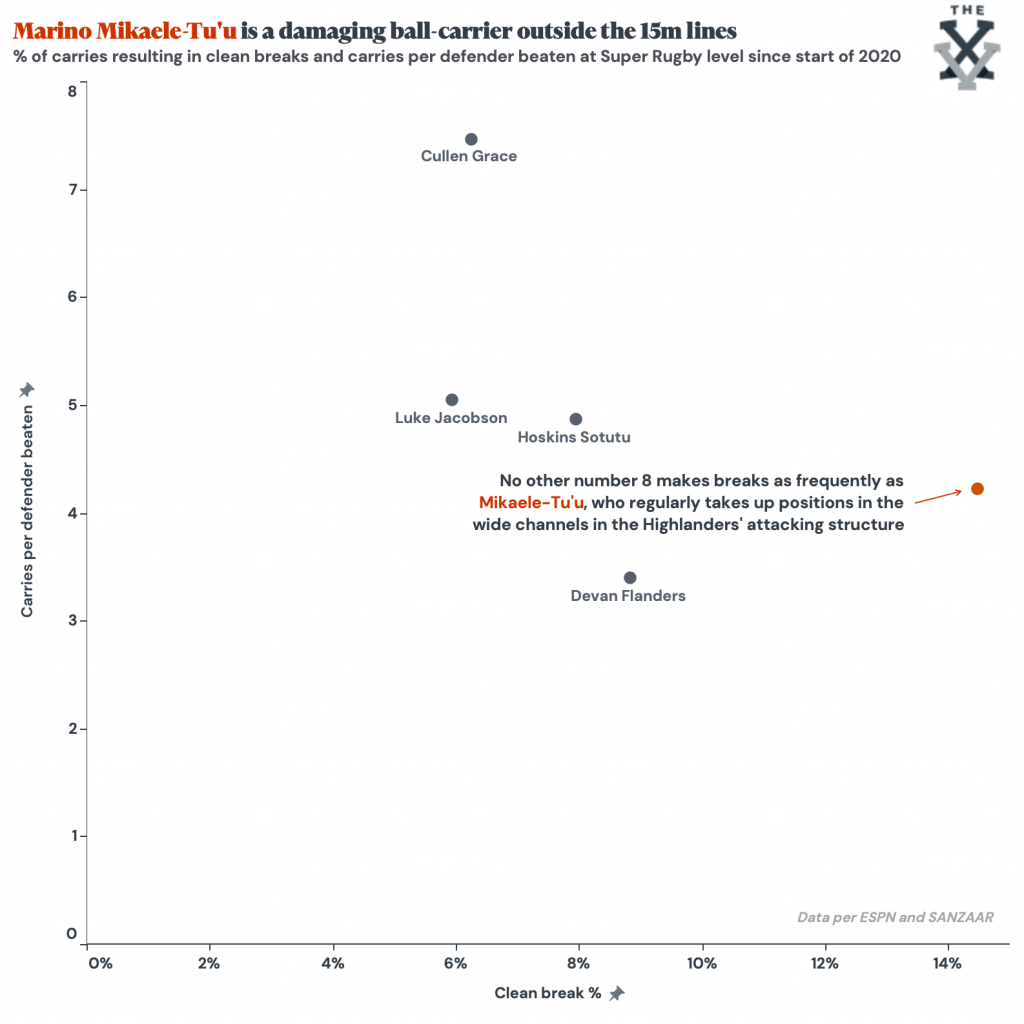
While Grace and Jacobson are primarily used through the middle of the park in attack, Flanders can often be found drifting to an edge like his Hawke’s Bay teammate Mikaele-Tu’u.
In a similar manner to Grace, Flanders is currently something of a peripheral figure in his team’s attack — averaging only 13.1 attacking touches per 80 minutes over the last two seasons — but he has shown an encouraging ability to link play by releasing the ball out of contact.
Crucially, he has also been able to do so while committing few turnovers of possession.

The Crusader and the Hurricane are similar in a number of other ways too.
Grace and Flanders are the two most defensively-focused players in the group, averaging approximately an equal number of tackle attempts and attacking touches per 80 minutes played.
This puts them at the other end of the spectrum to Sotutu, who currently does the majority of his work with the ball. Since the start of 2020, he has had 2.7 attacking touches in Super Rugby for every tackle that he attempts.
However, he is the most accurate in this area, completing 91.5% of his tackle attempts successfully.
Tackle success rate might be a much-maligned statistic, but in this case — comparing players in the same position who defend in broadly similar roles, and whose duties do not include rushing out of the line to corral an attack infield — it certainly contributes something of value to our assessment.
And, having looked at each of these areas in detail, it is remarkable how well balanced the Blues player’s skillset is at such a young age. Complementing his abundant playmaking ability and effective defence, he is also well able to steal opposition ball and offers an excellent lineout option — ranking second among this group of players in both turnovers won and lineouts won per 80 minutes over this period.
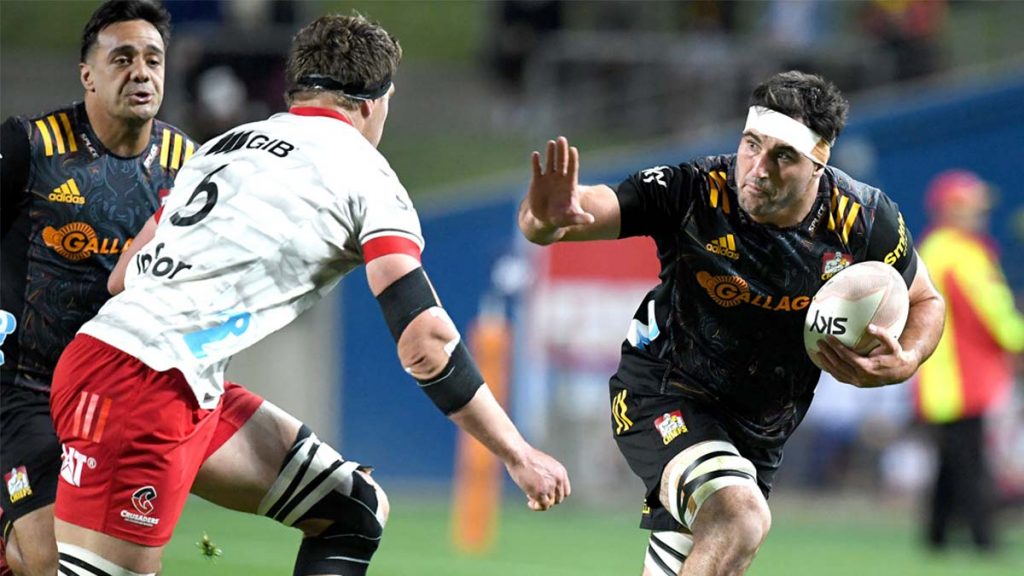
It’s also worth noting that — solely on the basis of the eye test, as no relevant data is publicly available — there is an argument that Sotutu consistently brings a physicality to his cleanout work at the attacking breakdown that none of the other four can match.
Each of these number 8s has their own strengths, but for these reasons it looks to be Sotutu — still years away from his prime — who has the best of chance of emulating Read as the ‘complete’ package at the base of the All Blacks’ scrum.
Nothing is guaranteed, however, and it will be thrilling to watch these five players develop and compete against one another in Super Rugby over the rest of this season and beyond.
Eventually, their own time will come, and they too will retire or head offshore — but, into that space, another crop of young players will have the opportunity to grow. The wheel never stops turning.



Comments
Join free and tell us what you really think!
Sign up for free